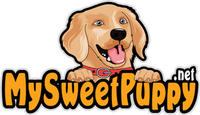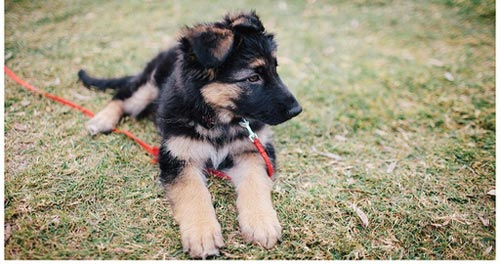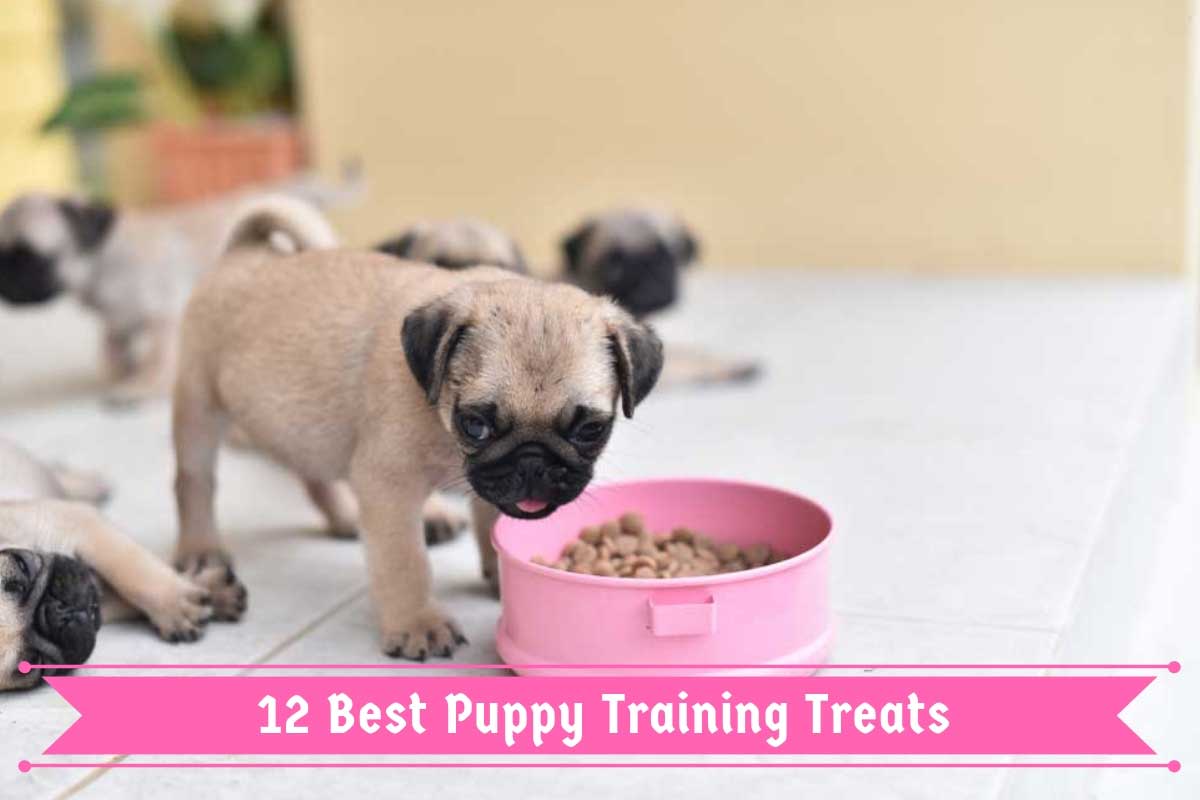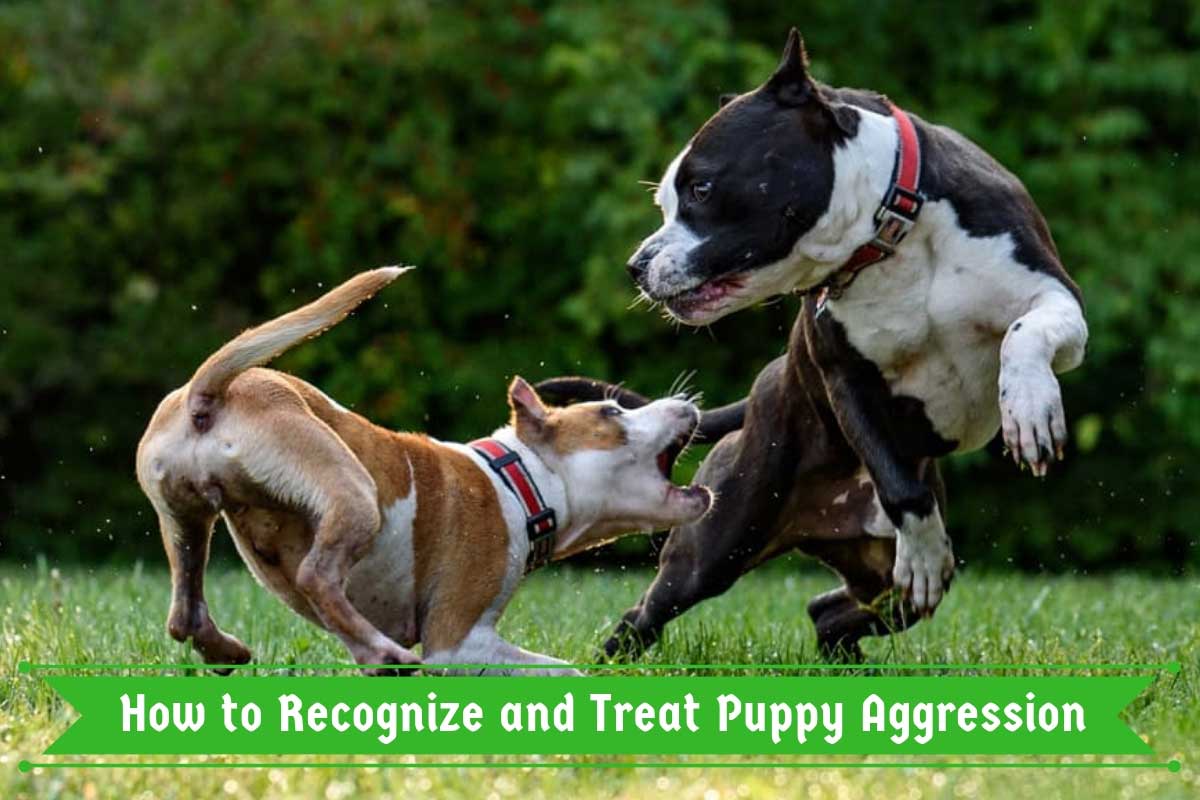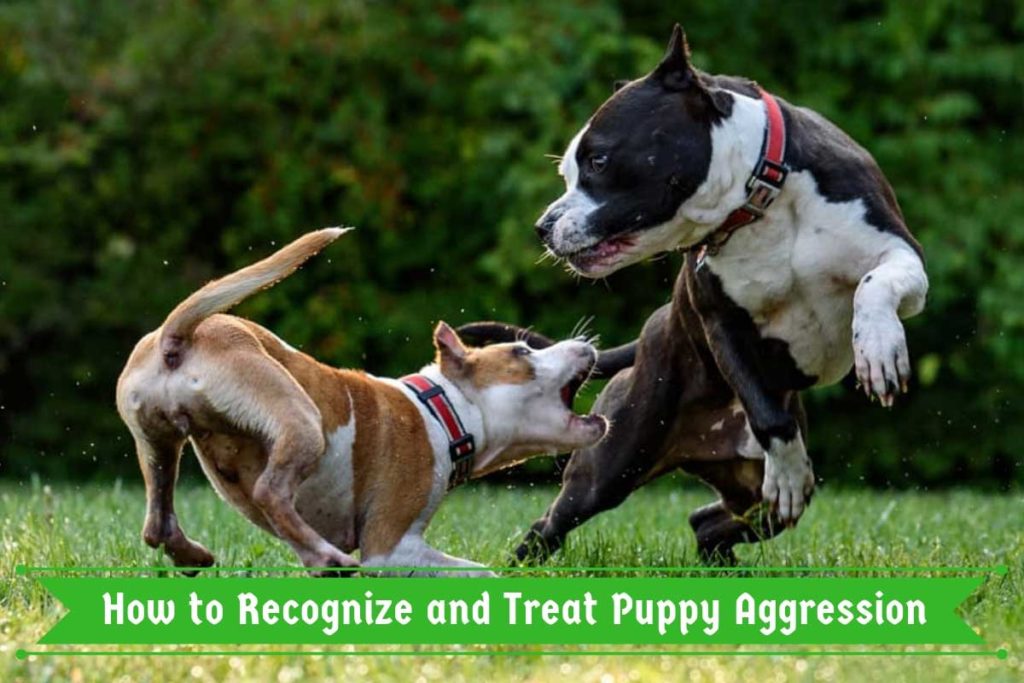
When it comes to puppies, the first thing that comes to mind is how cute, cuddly, sweet, and playful they can be. After all, who can resist a puppy? (I have two, so, obviously, I cannot). As your pet starts to grow and get older, though, you quickly begin to realize that you might have a problem. As adorable, cuddly, and playful as your puppy is, they’ve started showing signs of aggressive behavior as well. This can be worrying. After all, if your puppy is aggressive now, there’s no guarantee that they will naturally grow out of this aggression – it could get worse as they get older. We’re going to discuss how to recognize aggressive behavior in a puppy as well as how to treat it so you can nip it in the bud as quickly as possible.
Contents
Is my puppy being aggressive?
Depending on how familiar you are with puppies, you may take a certain behavior as a sign of aggression when in reality it’s normal puppy behavior. You may have witnessed your puppy playing with another dog for the first time and gotten alarmed by intense growling and the snarling noises that they make. This can’t be normal and must mean you have an aggressive puppy, right? After all, they certainly sound aggressive! Odds are, though, that your puppy is just simply being, you guessed it – a puppy. All puppies make these loud snarling and growling noises when they play and yours is no exception.
Biting
Biting (and potentially drawing blood) is also rarely a sign of true aggression in puppies but it can be a problem for puppy owners, especially when they have small children. Whether the puppy means it aggressively or not, nobody wants to deal with bite marks all of a small child’s arm followed by them running to you in tears and vowing to never play with the puppy again! While there are certainly ways to discourage and lessen puppy biting, it’s important to keep in mind that all puppies do it and it’s not a sign of aggression, regardless of how hard you feel about it. Puppies usually bite for one of two reasons – usually, it’s down to the fact that they’re overexcited, teething, or both. Puppies that are brought home before the recommended age of eight weeks are also more likely to bite and bite hard. This is because their mother teaches them how to be gentle when it comes to biting as best she can before they are passed onto you. So, if possible, avoid taking your new puppy home before they’ve hit the age of eight weeks and let them learn from their mother for as long as possible.
When does biting become abnormal?
Depending on the puppy, the biting stage should start to die down by the time they’re four months old. Many puppies will continue playful biting beyond this if they’re excited but the worst of it should be over by four months. If your dog continues to bite out of context (not during playtime and doing things like lunging at strangers and other dogs), they may be starting to show signs of fear aggression, which is often linked to lack of socialization. It is extremely rare for a young puppy to bite out of aggression; instead, it’s likely the puppy is deeply afraid. You should notice signs of fear in your puppy before it gets to this point, like cowering away from whatever’s scaring them. They use biting as a last resort when they have no idea what else to do to avoid what is threatening them. They are also likely avoiding eye contact and growing quiet – remember, your puppy doesn’t want to be mean, they just have no idea what to do after trying and failing to ward off what’s scaring them. There is a distinct difference between acting out of aggression and biting when they are being playful. If your puppy is just playing, they will try to get closer to what they want to play with and will try their absolute hardest to initiate eye contact.
How to correct aggressive (or non-aggressive) biting
While puppies generally teeth until they’re about four months of age, there’s no reason why you should have to put up with excessive puppy biting for that long, whether your puppy means to be aggressive with it or not. Here are a few tricks to help steer your puppy away from biting:
- Keep your puppy calm – Odds are, your pet has started biting because they’re overexcited which, although cute, is not acceptable behavior. If they’ve gotten to the point where they’re too excited and it’s causing you to be bitten, break up whatever game you and/or your pup are playing to stop it.
- Do not reward your puppy – Your puppy should not get an award of any kind immediately after biting someone and that includes your attention. Your puppy needs to realize that biting does not get your attention – in fact, it does the very opposite. They will soon learn that with biting comes consequences and those consequences are no fun at all. Completely ignore your pup right after they’ve bitten you until they calm down. Once they calm down, then they can be given a reward in the form of attention and/or a treat.
- Distract your puppy – If your pup has bitten you, give them a stern “no” and immediately put a toy or a rawhide bone in their mouth. This shows them what it is that they’re allowed to be chewing on, which is certainly not your skin. Do not continue to give them attention after this. They will eventually make the connection between the action they just performed and what it is that they are allowed to be chewing on.
Guarding of possessions or “resource guarding”
When your pup is guarding a prized possession, such as their food bowl or favorite toy, this has absolutely nothing to do with play and everything to do with being aggressive. They may be afraid that the possession will be taken away from them and are acting out immediately to make sure that doesn’t happen. Your puppy may also guard possessions that they know that they’re not allowed to have. Once they’re sneaky enough to have grabbed them from you, they don’t want to risk letting it go. This could be as insignificant as a shoe, a child’s toy, or something they’ve picked up off the ground whilst going for a walk.
How to correct resource guarding
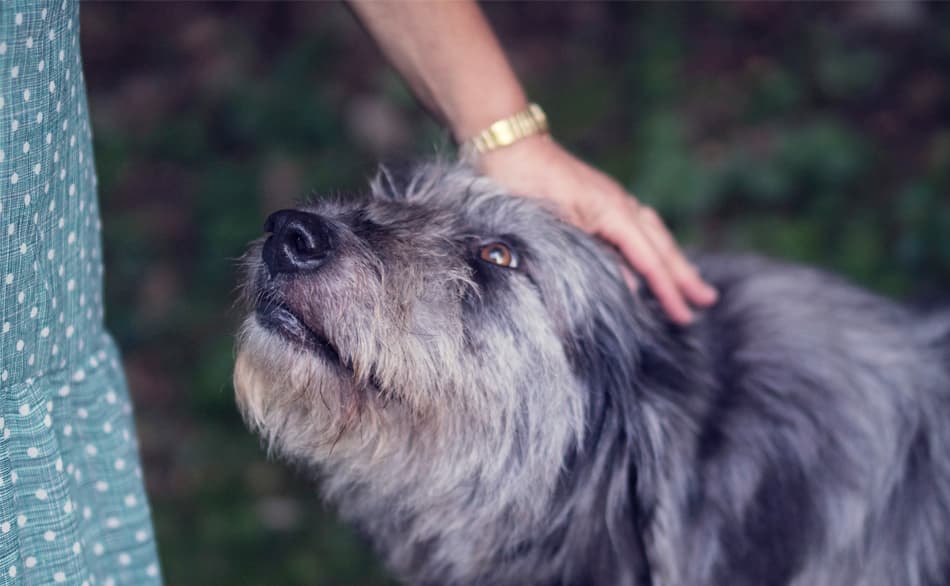
Keep in mind, resource guarding is considered to be normal behavior – as in, it is not out of the ordinary for a dog to behave this way. That said, it usually comes off as aggressive and you do not want to have to worry about your pup growling or snapping at you, another dog, or your kids if they get too close. While you won’t want to reward this behavior, the solution to improving resource guarding usually involves food. Here are some ways to treat resource guarding:
- Approach your puppy’s food bowl while they’re eating but not to test them or see how close you can get without them snapping. Approach their food bowl to give them something they like – perhaps a treat they don’t often get. They will begin to understand that a human approaching their food bowl doesn’t have to spell trouble.
- If your puppy doesn’t already know the command “drop it”, now would be an excellent time to teach them. When they performing resource guarding behavior, whether it’s with a piece of food, a bone, a sock, or a piece of trash, clearly present them with a piece of food (without giving it to them) and ask them to drop it. Once your pup has dropped the item, present them with the treat. Once they have finished the treat, give them back the item. Resource guarding results from fear that the object that they like is about to be taken away from them. If your pup realizes that they’re not only going to get something they like when you approach but they will also still get their object back, the urge to growl or snap will gradually disappear altogether.
Fear aggression
If it turns out that your puppy is actually being aggressive and you’ve completely ruled out that they’re just trying to play, the underlying issue of your puppy’s aggression is almost always fear. Unfortunately, fear usually comes from a puppy that is under-socialized as they have not been taught how to adapt to new situations. Some breeds are more likely to be fearful than others – you can have two puppies of different breeds with the same amount of socialization and exposure, and one may still be more fearful than the other. In that case, the nervous pup may just need extra socialization.
How do I treat fear aggression?
There are 21 different types of aggression in dogs and puppies which is something you may not know. Fear aggression is at the very top of the list as the most common form. Here are some common ways to help treat fear aggression:
- If you can avoid your pup’s triggers, do it or limit your pup’s exposure to it. This doesn’t mean that you should never go for a walk if that’s what scares your puppy. Figure out what part of going for walks is the issue and how you can best limit this experience for them. For example, maybe they are scared of going on walks because they are afraid of cars or loud noises. In this case, don’t start by taking them on the sidewalk of a busy street and hoping they’ll adapt if exposed enough times. Walk them on streets where there is less traffic exposure. They will certainly still have some exposure which will be good for them but it will at least give them a chance to slowly adapt to the occasional truck or loud noise rather than bombarding them with it.
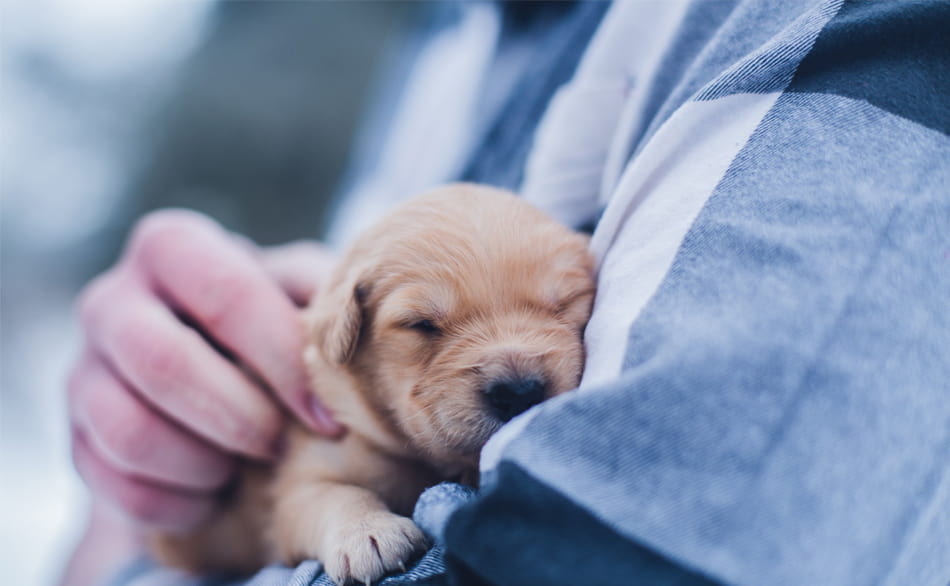
- Sticking to a predictable routine is key for pup’s that suffer from fear aggression. Try to stick to the same daily activities daily and slowly branch out. Once they understand that they’re not going to have any major surprises during their day, they grow more confident in what they’re doing and will eventually be open to more and more changes to their routine – they just need to be introduced slowly.
- Keeping yourself calm in situations that may scare your pup helps them realize that there’s nothing to be scared of. Your pup will often look to you for guidance and it’s your responsibility to make sure that you’re not reacting negatively to a situation that they’re already afraid of. Keep calm and act normal and, at the very least, it will help to not make the situation worse.
Keep in mind that most puppies don’t mean to be aggressive – it’s just part of growing up for them. They don’t know how to do everything perfectly when it comes to socialization, manners, and how to play nicely with other dogs right away. It’s going to take time just as it does with babies becoming toddlers and then children. If your puppy is becoming legitimately aggressive and you’re confident that this is not just part of their playtime, follow the above steps to try and derail the situation before it continues into adulthood. Keep in mind that any legitimate form of aggression is more often than not caused by fear and remember to stay patient with your pup. After all, how you would feel if someone was yelling at you because you were scared – doesn’t help, right? Exactly.
I grew up in a household that was filled with animals. I believe that my fate as a dog-loving person was sealed in early childhood since my parents owned several dogs of varying sizes and breeds. There was no choice but to take care of and learn about dog habits and the best animal care practices — otherwise, I’d be clueless about how to go about the creatures I was surrounded by day and night.
As a life-long puppy lover, I know a thing or two about dogs and how to go about caring for them in the best way possible. Although I’m not a professionally trained dog behaviorist, trainer, or veterinarian, all of my knowledge and experience with canines comes from a place of love and a deep-rooted passion for dogs and animals in general.
Seeing as dogs kept me company throughout every stage of my life, I decided to follow a different path in my academic life and obtained a Bachelor’s and Master’s degrees in Marketing Management and Digital Advertising, which ultimately allowed me to combine my professional training and personal experience by creating the ultimate dog lover’s resource website! Along with my husband, Dave, I run MySweetPuppy for like-minded dog lovers who want to have a single, clear, and reliable information source about anything and everything related to dogs and their well-being.
